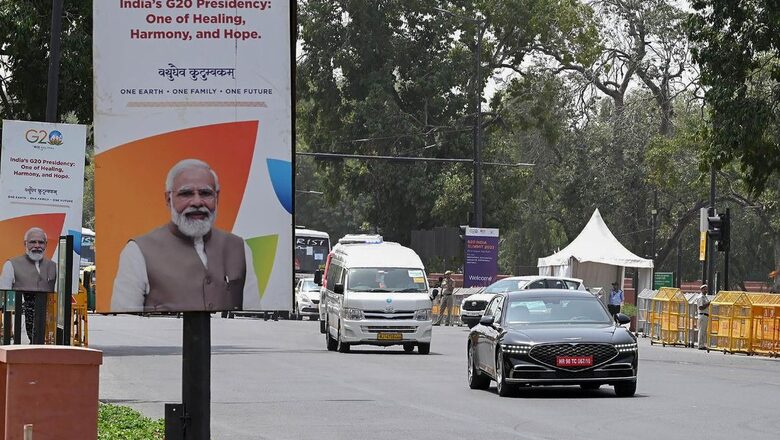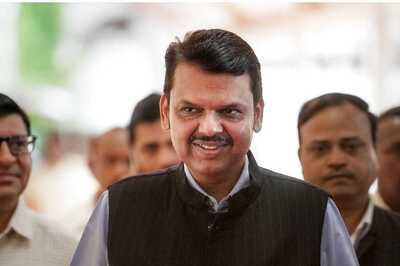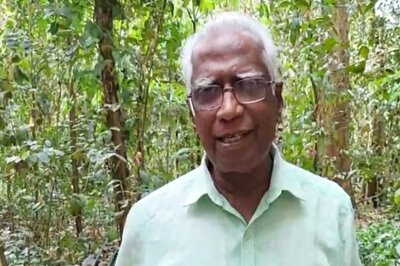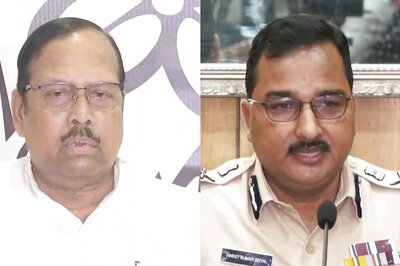
views
With India all set to host the world leaders at the G20 Summit in New Delhi on September 9-10, it is clear that the country has transitioned from being a mere participant and observer at multinational forums to leading and driving global agendas.
India’s model of ‘Sabka Sath, Sabka Vishwas’ is being considered around the world. According to Prime Minister Narendra Modi, this model can serve as a guiding principle for the welfare of the world and shift the focus from a GDP-centric approach to a human-centric one. What does that mean?
INDIA’S HUMAN-CENTRIC DEVELOPMENT PITCH
It shows the government does not see development as a mere function of the country’s GDP any longer. Rather, it takes into account how its governance has transformed the lives of millions of people. Viewing development solely on the mechanical GDP terms has always been contested, as a country’s industrial development can be tremendous, but the ordinary people may not receive the benefits of such development.
Instead, what development for India now means is elimination of poverty, major focus on infrastructure and capacity building, greater education, a push for urban and rural hygiene, connecting Indians with the financial system, eliminating corruption from their day-to-day lives, enabling them to achieve their dreams and be aspirational while also creating a conducive business environment. Industrial development is not demonised, but core human development is not ignored either. Crores of Indians today have what they did not just a decade ago – toilets, electricity, clean water, concrete houses, solid health insurance and more. This shows how India is beginning to care about human development like never before.
The theme of India’s G20 presidency is ‘Vasudhaiva Kutumbakam — One Earth, One Family, One Future’. This is a testament of India’s commitment to inclusivity and collaboration within the G20.
India is on a mission to not just help the G20 nations make their economies stronger and more resilient, but is also making a big push for ordinary people to be uplifted. That is what PM Modi means when he says India has emerged as a catalyst for human-centric development.
India realises that if countries work together towards the welfare of humanity, economic uplift would follow as a direct consequence. After all, a number of pro-people welfare schemes rolled out by the government over the past 10 years have had a transformative impact on the country’s economy.
For example, India identified districts that were earlier labelled ‘backward’ and neglected. But, with the government’s Aspirational Districts programme, such districts were empowered to dream big, aspire to lead better lives and contribute to nation-building. Similarly, India has connected crores of people to the banking system, bringing a radical change in not just their lives, but the financial system as a whole. This has been complemented by dramatic digital inclusion for a sea of people, with the help of affordable internet.
India has been focussing on last-mile delivery of developmental schemes and welfare projects. The electrification of rural India is now almost complete, with nearly all urban and rural households having an electricity connection. Many Indian households did not have water connections until recently. In the past few years, under the Jal Jeevan Mission, India has provided 10 crore water tap connections. Meanwhile, over 110 million sanitation facilities have been created across the country.
Among the first big decisions of PM Modi’s government was the launch of the Swachh Bharat Abhiyan – a people’s movement meant to keep India clean and green. Not only was this initiative aimed at cleaning India, it was also meant to provide the poor and underprivileged with a life of dignity. Whether it be providing concrete houses to poor Indians under the PM Awas Yojana or Rs 5 lakh health insurance under Ayushman Bharat, this government has done a lot to reach individual citizens and take the benefits of welfare schemes directly to them.
That was not always the case. With the Jan Dhan-Aadhar-Mobile (JAM) trinity well in place, the government can directly reach beneficiaries. So, middlemen have practically been eliminated from several walks of life. According to PM Modi, the earlier model was a government-centric one. The entire system was cumbersome and used to be full of bureaucratic processes that dissuaded people to take the benefits of such schemes. But the Indian government has now cracked the code of reaching Indians directly, which is why it wants to take its learnings around the world through G20.
INDIA LEADS COLLABORATIVE EFFORTS FOR GLOBAL GOOD
India has become a champion of the Global South, and is today seen as giving a voice to underdeveloped and developing nations. India today believes in the vision of ‘One World, One Health’ and ‘One World, One Sun, One Grid’. This shows how India wants to collaborate with the world for the betterment of humans as a species.
India also started the Coalition for Disaster Resilience so that countries across the world build infrastructure which withstands disasters. This, in addition to India’s major push within G20 on Disaster Risk Reduction (DRR) and collaborating with the world’s biggest economies to work towards mitigating the impact of disasters.
India is among the first G20 nations to achieve its climate goals a good nine years before schedule. When it comes to climate change, India is playing a crucial role on the global stage. India’s Mission LiFE initiative, which focusses on inculcating the idea of “lifestyle for environment”, is a big hit too. India’s goal is to make people around the world conscious about the planet and active participants in the fight against climate change.
India is also about to unveil the international Bio-Fuel Alliance on the lines of the International Solar Alliance (ISA). An announcement in this regard could be made during the G20 Leaders’ summit later this week. Both the ISA, as well as the upcoming biofuel alliance are meant to help countries make the energy transition needed to meet their climate goals. As an added bonus, such initiatives help enhance energy security, create opportunities for domestic industry, and create green jobs.
None of this is a fluke. Meticulous planning and strategy have gone into planning India’s G20 agenda. At the centre of this agenda is an earnest desire to transform human lives not just in India or among G20 nations, but across the world. This can be achieved by focussing on Human Development Indicators (HDIs) and sustainable development goals instead of the mechanical and economic goals that the G20 is known for.
India is effectively using G20 as a platform for global good and the welfare of humanity, and bringing a much-needed “human touch” to multinational forums.



















Comments
0 comment